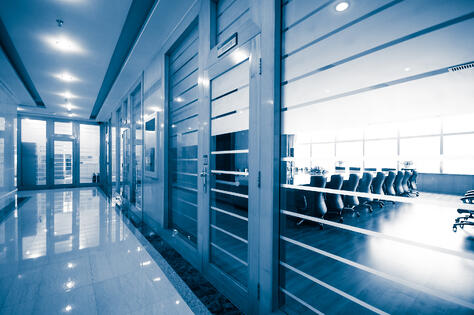 While office leasing is best left to the professionals, if you're going to occupy commercial real estate, it's good to understand what is going on in the documents that define your spaces. Knowing what goes into a lease can help you to work more closely with your tenant representative to negotiate the best deal possible.
While office leasing is best left to the professionals, if you're going to occupy commercial real estate, it's good to understand what is going on in the documents that define your spaces. Knowing what goes into a lease can help you to work more closely with your tenant representative to negotiate the best deal possible.
What It Really Costs
Which space is cheaper -- the one that costs $35 per square foot, or the one that costs $51 per square foot? If the $51 per square foot is leased on a gross basis and includes operating costs, it's actually cheaper than a $35 triple-net space that also carries $20 per square foot in taxes, insurance and operating expenses. When you lease office and other commercial real estate space, the type of lease you sign can have a large impact on your real occupancy cost.
As you look at leases, look at the type of lease you are signing. In a "full service" or "gross" lease, you usually pay a set rental amount that includes all of the costs of operating your space -- frequently even the expense for a janitor. Triple net leases, on the other hand, mean that your landlord bills you back for all of the building's operating expenses, including property taxes and insurance. Sometimes, these charges are called CAMs, standing for common area maintenance or management. Modified gross leases fall somewhere in the middle.
Measuring Commercial Real Estate Space
When you lease a 3,600 square foot office space, you aren't actually going to get 3,600 square feet of space. In the commercial real estate world, you occupy usable square footage but you pay rent on rentable square footage. Your usable square footage is the space inside the walls of your suite. The rentable square footage is your usable space plus your share of the common areas of the floor or the building, depending on how it is measured.
This means that if you take up half of the usable space on your floor, you'll also pay rent on half of the hallway, half of the bathrooms and half of the shared break rooms. It's common for this to add 10 to 20 percent to your space, meaning that if you rent 3,600 usable square feet, you'll probably pay rent on between 3,960 and 4,320 square feet.
Terms and Increases
Leases are usually long-term arrangements. Usually, you want a shorter lease since it's more flexible while the landlord wants a longer one because it's more secure. This means that you may be able to negotiate a better deal if you'll stay longer.
To protect themselves against inflation, many commercial real estate owners like to build rent escalations right into their office leases. That way, they know that they'll have more money coming in every year or so to help pay expenses and to help grow their returns. While flat increases are usually safer to you, tying your rent bumps to the rate of inflation can also be a good strategy as long as you cap how much they can go up.
Freebies
When you negotiate your office lease, the landlord might be willing to sweeten the pot to entice you to choose his building over another landlord's. Sometimes, they will give you a few months of free rent to help lessen the brunt of the cost of moving. Others will help pay some or all of the cost building out your tenant improvements. Ultimately, in commercial real estate, the deal you negotiate for is the one you end up getting so it almost never hurts to ask.
Here are some other articles to check out:
A Tenant's Guide to Load vs. Loss Factor
A Tenant's Guide to Commercial Lease Clauses Part 1
Reducing Occupancy Costs - A Guide For Commercial Tenants
Subscribe to our blog for more great tips!








